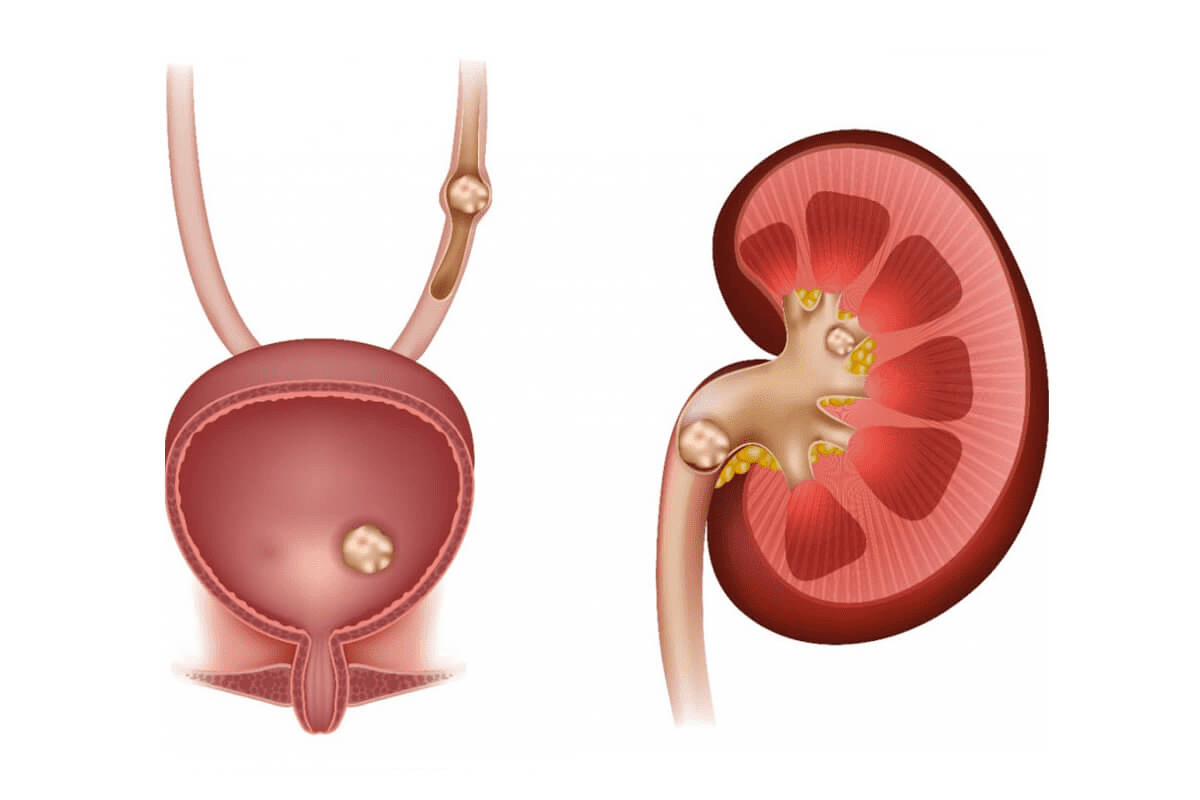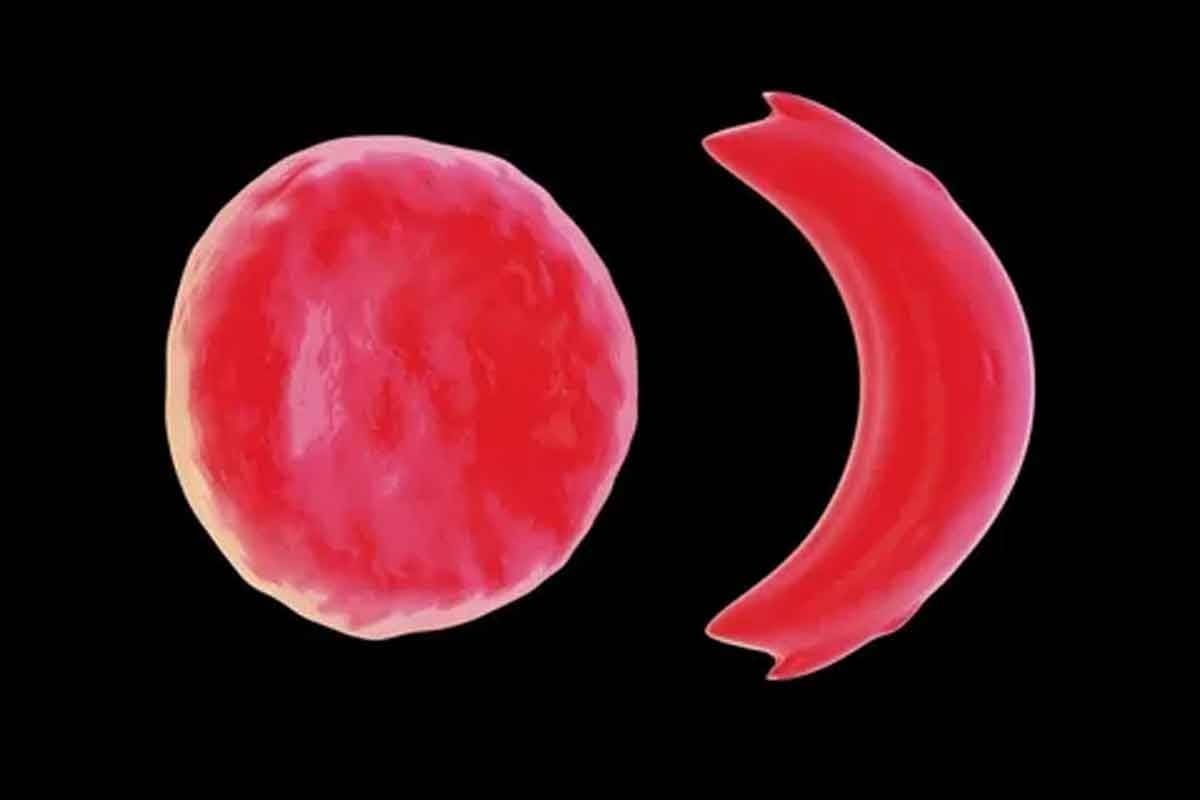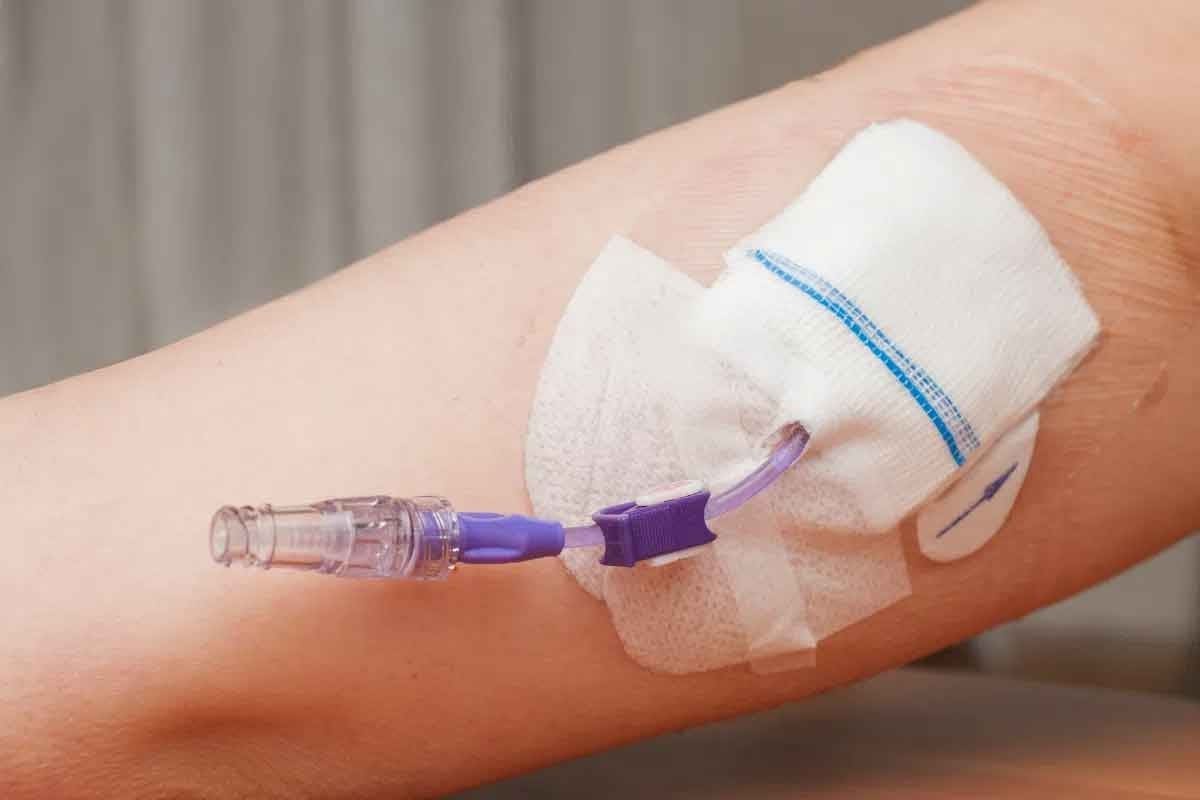Last Updated on November 27, 2025 by Bilal Hasdemir
Heart disease is a major killer globally, with blockages playing a big role. It’s vital to find heart blockages without surgery for good treatment and care. New tech has made nuclear stress tests and other scans key in spotting these blockages.
We look at how myocardial perfusion imaging tests and other non-invasive tools help find heart blockages. Tests like cardiac stress tests and positron emission tomography (PET) scans have changed cardiology. They give deep insights into heart health and blockages.
Thanks to these advanced scans, doctors can now find and treat heart blockages better. This leads to better patient care and more lives saved.
Key Takeaways
- Heart blockages are a big part of heart disease worldwide.
- Nuclear stress tests and myocardial perfusion imaging tests are key for non-invasive diagnosis.
- Scans like PET have made finding and treating heart blockages better.
- Good diagnosis is essential for better patient care and saving lives.
- Non-invasive tests are safer than old methods.
Understanding Heart Blockages and Their Symptoms

Coronary artery disease is a big cause of heart blockages. It’s important to know its symptoms and risk factors. Heart blockages happen when the arteries that supply blood to the heart get narrowed or blocked. This is due to plaque buildup, known as atherosclerosis.
Common Causes of Coronary Artery Disease
Several factors lead to coronary artery disease. These include:
- High Blood Pressure: High blood pressure can damage the arteries, making them more likely to block.
- High Cholesterol: High levels of LDL cholesterol can cause plaque in the arteries.
- Smoking: Smoking harms the heart and increases disease risk.
- Diabetes: Diabetes can damage arteries and raise heart disease risk.
- Family History: A family history of heart disease can increase your risk.
Warning Signs That Might Indicate Heart Blockage
It’s key to know the symptoms of heart blockage for early treatment. Common signs include:
- Chest Pain (Angina): Chest discomfort that may spread to arms, back, neck, jaw, or stomach.
- Shortness of Breath: Feeling like you can’t breathe or are winded even when resting.
- Fatigue: Feeling very tired or weak.
- Swollen Legs or Ankles: Fluid buildup in the legs or ankles due to heart failure.
Dr. Eric Topol, a cardiologist, says, “The symptoms of heart blockage can be subtle. But catching them early can greatly improve outcomes.”
“The key to managing heart blockages is early detection and treatment. By knowing the risk factors and symptoms, people can take steps to protect their heart health.”
Risk Factors You Should Know
Knowing the risk factors for heart blockages helps in prevention and early detection. The main risk factors are:
| Risk Factor | Description |
| Age | Risk goes up with age, after 45 for men and 55 for women. |
| Obesity | Being overweight or obese raises the risk of heart disease. |
| Physical Inactivity | Not being active can lead to heart disease. |
| Unhealthy Diet | Eating too much saturated fat, cholesterol, and sodium increases risk. |
By knowing these risk factors and symptoms, people can work with their doctors to manage their risk. This helps detect heart blockages early.
The Importance of Early Detection in Cardiovascular Health
Early detection is key to preventing heart problems. Heart diseases are a big cause of sickness and death worldwide. So, finding and treating them early is very important.
Why Non-Invasive Testing is Preferred Initially
Non-invasive tests are often the first step in finding heart issues. They are safer and give important info about the heart without surgery. Nuclear medicine is a big help here, using advanced images to spot heart diseases.
These tests help find problems early. This lets doctors start treatments to stop heart disease from getting worse.
Risk Stratification in Cardiac Diagnostics
Risk stratification is a big part of heart disease diagnosis. It figures out how likely a person is to have a heart attack. This helps doctors make plans that fit each patient’s needs.
| Risk Level | Description | Recommended Action |
| Low | Little to no risk factors for cardiovascular disease | Routine check-ups and lifestyle advice |
| Moderate | Some risk factors present; possible heart disease | More tests, lifestyle changes, and maybe medicine |
| High | Big risk factors; likely heart disease | Strong management, tests, and treatment |
When to Seek Testing for Possible Heart Blockages
Knowing when to get checked for heart blockages is important. If you have chest pain, trouble breathing, or feel dizzy, see a doctor. People with heart disease in their family or risk factors like high blood pressure or diabetes should also get regular heart checks.
Understanding early detection and when to get tested helps keep your heart healthy. Talk to a doctor to find out what’s best for you.
Overview of Non-Invasive Cardiac Testing Options
Non-invasive cardiac testing has changed how we find and treat heart disease. These tests help spot heart problems without surgery. This makes them safer and more available to many people.
Electrocardiogram (ECG/EKG): Capabilities and Limitations
An electrocardiogram, or ECG/EKG, is a key test that shows the heart’s electrical activity. It helps find heart rhythm problems, detect heart blockages, and see if someone has had a heart attack. But, it can’t show the heart’s shape or how well it pumps.
Capabilities: Finds rhythm problems, detects blockages, spots heart attacks.
Limitations: Can’t show heart shape or pumping ability.
Echocardiogram: Visualizing Heart Structure and Function
An echocardiogram uses sound waves to show the heart’s inside. It checks how well the heart valves work, finds problems with heart muscle, and sees how well the heart pumps. It’s good but can be tricky in some body types and depends on the person doing the test.
Key benefits include: Checks valves, finds muscle problems, sees pumping ability.
Cardiac CT Scan: Detailed Imaging of Coronary Arteries
A cardiac CT scan makes detailed pictures of the heart and blood vessels with X-rays. It’s great for finding calcium in arteries, checking for heart disease, and looking at the heart’s shape. But, it uses radiation and might not be right for everyone, like those with kidney issues.
| Test | Primary Use | Radiation Exposure |
| Cardiac CT Scan | Assessing coronary artery disease | Yes |
| Echocardiogram | Evaluating heart structure and function | No |
| ECG/EKG | Diagnosing arrhythmias and ischemia | No |
Cardiac MRI: Advanced Tissue Characterization
Cardiac MRI makes detailed pictures of the heart without radiation. It’s good for looking at heart muscle, finding heart tumors, and seeing how the heart works. It’s detailed but not as common as other tests and might not work for people with metal implants or who get scared in tight spaces.
“Cardiac MRI has become an indispensable tool in the diagnosis and management of complex heart conditions, providing unparalleled tissue characterization and functional assessment.”
Nuclear Medicine: The Science Behind Cardiac Imaging
Nuclear medicine is key in heart diagnostics. It uses radiopharmaceuticals to show how the heart works and if there are blockages. This method has changed cardiology by giving clear images of the heart’s structure and function.
What Are Radiopharmaceuticals and How Do They Work?
Radiopharmaceuticals are special compounds with a radioactive tracer. When they go into the body, they light up specific areas, like the heart. This lets doctors make detailed images through nuclear imaging.
The most used radiopharmaceuticals for heart scans are Technetium-99m (Tc-99m) and Thallium-201 (Tl-201). The right one depends on what the doctor needs to see and the type of scan.
How Nuclear Imaging Visualizes Heart Function
Nuclear imaging, like PET (Positron Emission Tomography) and SPECT scans, shows how the heart works. It does this by catching the radiation from the radiopharmaceuticals. These images tell a lot about the heart’s blood flow, health, and how it handles stress.
These images help doctors find heart disease, see how much damage there is after a heart attack, and check if treatments are working. By looking at these images, doctors can make better choices for their patients.
Evolution of Nuclear Cardiology Techniques
Nuclear cardiology has grown a lot over time. New imaging tech, like PET/CT and SPECT/CT, has made diagnoses more accurate. These systems give a fuller picture of the heart.
New radiopharmaceuticals also mean better images and less radiation for patients. Research keeps improving these methods, aiming for even better and safer heart scans in the future.
Nuclear Stress Test Explained: Gold Standard for Detecting Blockages
The nuclear stress test is a top choice for finding blockages in the heart. It uses stress testing and nuclear medicine to show how the heart works under stress. This gives a full view of the heart’s health.
What is a Nuclear Stress Test and How Does it Work?
A nuclear stress test checks how the heart works when stressed, often through exercise or medicine. A tiny amount of a radioactive tracer, like thallium, cardiolite, or myoview, is given. This tracer shows where blood flow is low, pointing to blockages or damaged heart areas.
The test has two parts: at rest and under stress. Pictures are taken at both times. This lets doctors see how blood flow changes, helping spot problems.
Types of Nuclear Stress Tests: Thallium, Cardiolite, and Myoview
There are different nuclear stress tests, mainly based on the tracer used. Thallium was early and is used today. Cardiolite (technetium-99m sestamibi) and Myoview (technetium-99m tetrofosmin) are also common. The right tracer depends on the patient’s needs and condition.
Nuclear Stress Test vs. Regular Stress Test: Key Differences
A nuclear stress test shows more than a regular stress test. It looks at heart blood flow and function, not just heart rate and blood pressure. This gives a clearer picture of heart health and disease.
Why Doctors Order Nuclear Stress Tests
Doctors use nuclear stress tests for many reasons. They help find heart disease, check heart attack risk, and see if treatments work. It’s great for those at risk or with heart symptoms. The test helps doctors make better treatment plans.
The Nuclear Stress Test Procedure: What to Expect
Learning about the nuclear stress test can make you feel less nervous. We’ll walk you through each step, from getting ready to recovering. This way, you’ll know what to expect and feel supported.
Before the Test: Preparation Guidelines and Restrictions
Before the test, it’s key to follow certain steps to get accurate results. Avoid caffeine and some medicines for 24 hours before to ensure the test works right. Wear comfy clothes and shoes for exercise. Tell your doctor about your medicines and allergies.
On test day, arrive early to fill out papers and change into a gown. Eat a light meal, but skip heavy or fatty foods to avoid discomfort.
During the Test: Step-by-Step Process and Timeline
The test starts with an IV line in your arm. A small amount of radioactive tracer is given through it. Then, you’ll walk on a treadmill or bike to stress your heart. The exercise gets harder to reach your target heart rate.
At the peak stress, the tracer is given, and you keep exercising for a minute. Your heart rate, blood pressure, and ECG are watched closely. The whole thing takes 2 to 4 hours.
After the Test: Recovery, Follow-up, and Radiation Precautions
After, you’ll wait for 30 to 60 minutes in a special area. This lets the tracer spread through your heart. Then, you’ll have imaging tests to see your heart.
After imaging, you can go home and do normal things unless told not to. Drink lots of water to get rid of the tracer. Follow any post-test instructions from your doctor, even though the radiation is safe.
Your cardiologist will look at your test results and schedule a follow-up. Waiting for results can be tough, but we’ll share the news with care and kindness.
Myocardial Perfusion Imaging: Seeing Blood Flow to the Heart
Myocardial perfusion imaging shows how blood reaches the heart muscle. It’s a non-invasive test that helps find heart problems. These problems can be due to blocked arteries or heart blockages.
Detecting Blockages with Myocardial Perfusion Imaging
This imaging method checks blood flow to the heart muscle at rest and under stress. It spots areas with less blood flow, which might mean blocked arteries. Doctors compare images taken during stress and rest to find heart areas with poor blood supply.
To do this, a tiny amount of radioactive tracer is injected into the blood. The tracer builds up in the heart muscle based on blood flow. Then, a gamma camera captures images of the radiation from the tracer.
SPECT vs. PET Perfusion Imaging: Advantages and Differences
There are two main types of myocardial perfusion imaging: SPECT and PET. Each has its own benefits and is chosen based on the patient’s needs and what doctors need to know.
| Characteristics | SPECT | PET |
| Imaging Technique | Uses gamma rays | Uses positron emissions |
| Sensitivity and Specificity | High sensitivity, moderate specificity | High sensitivity and specificity |
| Radiation Exposure | Moderate radiation dose | Generally lower radiation dose than SPECT |
| Image Resolution | Good, but can be affected by artifacts | Excellent, with better image quality |
Reading Perfusion Images: What Doctors Look For
Doctors examine myocardial perfusion images for areas with less tracer uptake. This means less blood flow to the heart muscle. They compare stress and rest images to spot coronary artery disease and blockage severity.
They also check the heart’s overall function, like the ejection fraction. This helps decide the best treatment for patients.
Interpreting Nuclear Stress Test Results
Understanding nuclear stress test results is key to knowing your heart’s health. These tests show how well your heart works and if there are blockages. We’ll help you understand what these results mean.
Normal vs. Abnormal Results: What the Colors and Patterns Mean
Nuclear stress tests show images with colors that mean different things. Normal results have even colors, showing your heart gets enough blood flow. Abnormal results might have darker areas, meaning blockages or ischemia.
Experts look at these images to find heart problems. A reversible defect means ischemia that goes away at rest. A fixed defect shows scarring or permanent damage.
Can a Nuclear Stress Test Definitively Show Blockages?
A nuclear stress test is great at finding blockages and how they affect your heart. It doesn’t see the arteries like an angiogram but shows where blood flow is low. This helps doctors know what to do next.
Even though these tests are very accurate, they’re not 100% right. Your health, other heart issues, and the test’s details can affect the results.
Understanding Test Sensitivity and Specificity
The sensitivity of a test means it finds heart disease correctly. The specificity means it correctly says who doesn’t have heart disease. A good test finds most problems but avoids false alarms.
Nuclear stress tests are very good at both. They help a lot in finding and managing heart disease. But, it’s important to look at the results with your whole health in mind.
Safety and Risks of Nuclear Stress Tests
Nuclear stress tests are mostly safe, but there are risks and side effects to know. It’s important to understand the good and the bad of these tests.
These tests use small amounts of radioactive tracers to see how the heart works under stress. They are safe, but like any test, they have risks.
Radiation Exposure: Putting the Risks in Perspective
Radiation is a big worry with nuclear stress tests. The dose can change based on the tracer and the patient. For example, a typical study with Technetium-99m sestamibi has a dose of 9-10 mSv.
“The radiation exposure from a nuclear stress test is comparable to that of other common medical imaging procedures, such as a CT scan of the abdomen and pelvis.”
Source: American Heart Association
To understand better, here’s a table comparing radiation doses from different tests:
| Procedure | Typical Effective Dose (mSv) |
| Nuclear Stress Test (Technetium-99m) | 9-10 |
| CT Abdomen and Pelvis | 10-20 |
| Chest X-ray | 0.1 |
How Long Are You Radioactive After a Nuclear Stress Test?
The tracer in these tests has a short half-life. Technetium-99m, for example, lasts about 6 hours. This means the body isn’t radioactive for long.
Key Facts About Radioactive Decay:
- The physical half-life of Technetium-99m is about 6 hours.
- The biological half-life is also short, as the body clears the tracer quickly.
- Most of the radiation is gone in the first 24 hours after the test.
Potential Side Effects and Complications
Even though rare, side effects and complications can happen. These might include:
- Allergic reactions to the tracer.
- Changes in heart rhythm or blood pressure during the test.
- Discomfort or pain at the injection site.
Though rare, serious problems like heart attack or severe arrhythmias can occur. It’s important to talk about your risks with your doctor.
In summary, nuclear stress tests have risks, but they are often worth it for those needing to know about their heart health. Knowing the risks and benefits helps patients make good choices about their care.
Alternative Stress Testing Methods for Special Populations
Healthcare providers use different methods to check the heart when regular tests can’t be done. This is for people who can’t move well or have serious breathing problems. These tests help find heart problems and blockages.
Pharmacologic Stress Tests for Those Unable to Exercise
Pharmacologic stress tests are for those who can’t exercise on a treadmill or bike. Instead, a medicine is used to make the heart work like it would during exercise. This medicine makes blood vessels wider, like exercise does.
These tests are for people with arthritis, brain disorders, or other mobility issues. They help find heart disease and see if blood flow is good.
Chemical Nuclear Stress Tests: Persantine, Adenosine, and Regadenoson
Chemical nuclear stress tests use special medicines with nuclear imaging. Persantine, adenosine, and Regadenoson are the main medicines used. They make blood vessels wider to check how well the heart gets blood.
Persantine is given through an IV and can’t be used with regular exercise tests. It makes blood vessels wider by stopping adenosine from being taken up by the body.
Adenosine is also given through an IV and works fast. It makes blood vessels wider but needs to be kept flowing because it breaks down quickly.
Regadenoson is a newer medicine that works like adenosine but lasts longer. It’s easier to use and has fewer side effects than adenosine.
Stress Echocardiograms: When They’re Preferred Over Nuclear Tests
Stress echocardiograms are another choice instead of nuclear tests. They do an echocardiogram at rest and after stress. This shows how well the heart works and if there are any problems.
We choose stress echocardiograms for some patients, like those at lower risk or who don’t need radiation. They’re also good for checking heart valves and finding other heart issues.
The right test depends on the patient’s health and what they need. This way, doctors can find and treat heart problems well, even in special cases.
Practical Considerations: Cost, Insurance, and Accessibility
When thinking about a nuclear stress test, cost, insurance, and where to go are key. These points are important for both patients and doctors. They help in figuring out heart health.
How Much Does a Nuclear Stress Test Cost?
The price of a nuclear stress test changes based on where you are, who you see, and what the test includes. It usually costs between $1,000 and $3,000. It’s smart to talk to your doctor and insurance to get a better idea of the cost.
| Service | Average Cost |
| Nuclear Stress Test | $1,000 – $3,000 |
| Interpretation of Results | $200 – $500 |
| Total Estimated Cost | $1,200 – $3,500 |
Insurance Coverage for Cardiac Diagnostic Tests
Insurance for nuclear stress tests varies. Many plans cover it if it’s needed. It’s important to check what your insurance covers and what you might have to pay out of pocket.
Key Factors Affecting Insurance Coverage:
- Medical necessity as determined by a healthcare provider
- Type of insurance plan
- Network participation of the healthcare provider
Where to Get Nuclear Cardiac Testing
You can get nuclear cardiac tests at hospitals and imaging centers. Talk to your doctor to find a good place near you.
In summary, knowing about nuclear stress tests is important. By understanding costs, insurance, and where to go, you can handle your heart health better.
What Happens After an Abnormal Test Result?
Getting an abnormal test result can be scary. But knowing what comes next can ease your worries. If a nuclear stress test shows something off, it means we need to dig deeper to find out why and what to do next.
Follow-up Diagnostic Procedures
After an abnormal test, we usually suggest more tests to learn more. These might include:
- Echocardiogram to check heart function and shape
- Cardiac CT scan for clear images of the coronary arteries
- Cardiac MRI for detailed tissue analysis
These tests help us understand the heart’s condition better.
When an Invasive Test Like Angiography Becomes Necessary
Sometimes, we need to do a more detailed test like coronary angiography. This involves putting a catheter in the arteries to see the coronary vessels up close and find any blockages.
“Coronary angiography is considered the gold standard for diagnosing coronary artery disease, as it provides a detailed view of the coronary arteries and any possible blockages.”
Nuclear Cardiology Reference
Angiography is usually suggested when non-invasive tests show big blockages or when symptoms keep coming back despite other treatments.
Treatment Options Based on Diagnostic Findings
Treatment plans are made just for you, based on your diagnosis and health. You might get:
| Treatment | Description |
| Medications | To manage symptoms, lower risk factors, and stop disease from getting worse |
| Angioplasty/Stenting | Small, non-surgical procedures to open blocked arteries |
| CABG (Coronary Artery Bypass Grafting) | Surgery to bypass blocked arteries |
Lifestyle Changes That May Be Recommended
Medical treatments are important, but changing your lifestyle is key to heart health. We often suggest:
- Eating healthier to lower cholesterol and blood pressure
- Exercising regularly, based on your fitness level
- Stopping smoking
- Learning to manage stress
These lifestyle changes can greatly improve your health and lower the chance of more heart problems.
Conclusion: Making Informed Decisions About Cardiac Testing
We’ve looked into cardiac testing, like nuclear stress tests and myocardial perfusion imaging. These tests help find heart blockages. It’s key to make smart choices about these tests for heart health.
Knowing the different tests helps people work with their doctors. This way, they can find the right test for their needs. Cardiac tests are important for finding and treating heart disease.
Nuclear stress tests and myocardial perfusion imaging give important info on the heart. They help doctors spot blockages and plan treatments. We suggest talking to your doctor about these tests to make the best choices for your heart.
FAQ
What is a nuclear stress test?
A nuclear stress test is a test that uses a tiny bit of radioactive material. It shows how the heart and blood flow work when stressed. This stress is usually from exercise or medicine.
How does a nuclear stress test detect heart blockages?
It finds heart blockages by spotting areas with less blood flow during stress. This means there might be blockages in the heart’s arteries.
What is the difference between a nuclear stress test and a regular stress test?
A nuclear stress test uses radioactive tracers to see the heart. A regular stress test just watches the heart’s activity, like rate and rhythm, without pictures.
Are nuclear stress tests safe?
Yes, they are mostly safe. They do expose you to a little radiation. But, they’re usually worth it for checking heart health.
How long does it take to recover from a nuclear stress test?
You can usually get back to normal quickly after a nuclear stress test. The radioactive stuff leaves your body in a few hours to days.
Can a nuclear stress test show blockages?
Yes, it can. It shows areas with less blood flow to the heart muscle during stress, which might mean blockages.
What are the alternatives to nuclear stress tests?
There are other tests like stress echocardiograms and pharmacologic stress tests. These don’t use radiation.
How much does a nuclear stress test cost?
The price varies a lot. It depends on where you are, who you see, and your insurance.
Is a nuclear stress test covered by insurance?
Many plans cover it if a doctor says it’s needed.
What should I expect during a nuclear stress test?
You’ll get a small amount of radioactive material injected into your blood. Then, your heart will be imaged at rest and during stress.
How long does the radioactive material stay in my body after a nuclear stress test?
It leaves in a few hours to days. This depends on the tracer used.
What are the possible side effects of a nuclear stress test?
Side effects are usually mild. They might include soreness at the injection site, allergic reactions, or side effects from the stress medicine.






